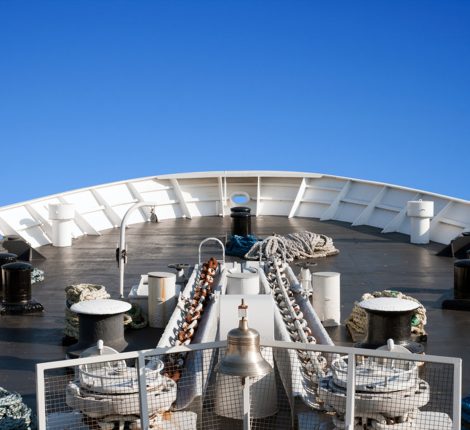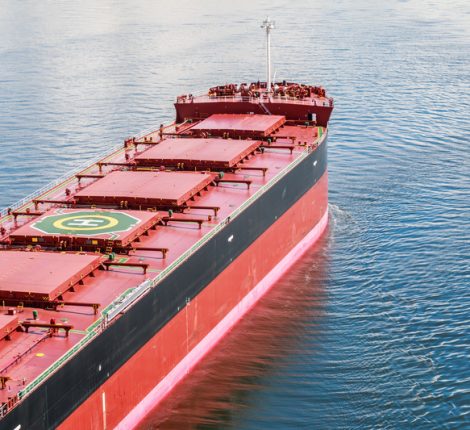- August 25, 2025
- 2025 , Circulars
- Comments : 0
Alert on Detainable Deficiencies
C25044 | 13 August 2025
Notice to: Ship Owners / Managers / Operators / Surveyors / Auditors
Following recent Port State Control (PSC) inspections, deficiencies were recorded that resulted in the detention of the vessels. Dromon wishes to draw attention to those deficiencies considered as ‘grounds for detention’ to avoid recurrence.
These detainable deficiencies, all of which contributed to detentions, were:
Structural Condition:
- Structural members in the forepeak (plates, brackets, frames) were cracked, thinned, blistered, and corroded.
- Hatch coaming structural members (brackets ) were cracked, thinned, and corroded.
- The ship’s hull was excessively dented.
- Many structural members (forepeak, deck, hatch coamings) did not meet the requirements of the thickness measurement report.
- Many water-tight doors were inoperative.
- Two sounding pipes in the engine room were without counterweights, and one sounding pipe was without a cover.
- Deficiencies from the previous MoU PSC Inspection were found not rectified (frames, longitudinal members were corroded, thinning, deformed in side ballast tanks).
- The stability calculation for the last two cargoes had not been prepared.
- Top of the upper deck accommodation was holed.
- In side ballast tanks, some frames/stiffeners/stringers/beams/brackets/flat bars were heavily corroded.
- The air conditioning ventilation unit was holed & damaged.
- The funnel was found holed.
Water/Weathertight Condition
- Hatch cover side plates were excessively cracked and thinned.
- The engine room, forecastle, and accommodation entrance doors were not weather-tight.
- The sea chest was not watertight.
- The Manhole on the funnel top casing was found open and can not close completely.
Emergency Systems
- There was no record of testing of the emergency fire pump.
- The was no enclosed space entry drill included in the drill plan.
- The muster station and lifeboat embarkation entrance stair/area were not illuminated by emergency lighting.
- Emergency lights in the engine room and forecastle area were inoperative.
- The secondary means of starting the emergency generator (a second set of batteries) was found to be discharged and in poor condition.
- The emergency generator was not ready for automatic starting (Emergency switchboard switches in manual mode).
- The emergency generator was unable to start during the operational test.
- The emergency diesel generator was inoperative due to battery failure.
- After 3 attempts, the emergency diesel generator could not be connected during the blackout.
Radio Communication
- No VHF DSC internal tests had been carried out.
Fire Safety
- The fire detection panel had a fault alarm.
- Many fire doors were either not closing properly or were tied back with wires.
- The self-closing door on the upper deck – entrance to ER was out of order.
- The self-closing fire doors on the poop deck and boat deck were out of order.
- Several (self-closing fire doors, bridge entry, engine room emergency exit) were found in the open position with hold-back hooks & ropes.
- A B-class fire door to the crew mess room was found lashed in an open position, and the handle for operation was missing. Several self-closing fire doors in the accommodation and engine room entrance were not closing properly.
- The main engine fuel tank oil leakage alarm was inoperative.
- The Engine Room fire dampers located on the Navigation bridge deck were unable to be closed during the operational test.
- The air bottle in the fire station, for emergency quick closing of valves and fire dampers, was found with no pressure.
- There was a hole in the fire main.
- The main engine fire damper located on the bridge could not be closed.
- The D/O settling tank quick-closing valve remote operation test failed.
- The Breathing Apparatus pressure was insufficient.
- The CO2 room was locked, and the ship’s crew were unable to open it within 10 minutes.
- The fire line in the way of the windlass was found holed.
- The goose-neck type ventilation cover for the A/C was missing.
- The Paint Locker fire water spraying system was found inoperative.
Alarms
- The steering gear hydraulic oil low-level alarm was inoperative.
- There was no record of steering gear alarms testing.
- There was no record of the Engine room fire alarm testing.
- The fire alarm detector in the Engine Room was inoperative. Fire alarm smoke detectors in the engine room had been made operable.
Safety of Navigation
- The VDR panel had an error alarm.
- The Bridge and Steering Gear Room rudder angle indicators differed by 5 degrees.
- Nautical charts for the intended voyage were missing.
- 3 charts from the previous voyage were missing.
- One voyage chart had not included the route plan and was not updated.
- Some voyage charts had expired, and some were not kept up-to-date.
- The last voyage plan berthing position was wrong.
- Charts were not updated with Maritime Safety Information.
- Coastal warnings (Maritime Safety information) had not been received (gunnery bombing exercises area).
- Some Nautical Publications were not corrected.
- All Nautical Publications, SOLAS, GMDSS manual, LSA Code, ITU list and procedures for Port State Control were expired.
- Some electronic publications are missing.
Life Saving Appliances
- There was no record of testing of the rescue boat’s hook.
- The pilot ladder’s manila rope was broken, and the pilot entrance was not non-slip.
- The lifejacket’s lights had expired.
- The starboard side lifeboat engine was unable to turn the propeller and continuously stopped during operation.
- The crew were unable to demonstrate stowing of the rescue boat davit by stored mechanical power.
- The rescue boat engine was not ready for use (wasted starting battery).
- There was no evidence that the port lifeboat had been launched and manoeuvred in the sea within the previous three months.
- The lifeboat engine was unable to turn the propeller and continuously stopped during operation.
- The lifeboat steering system was inoperative.
- The lifeboat could not be started.
- The crew were not familiar with the procedure for launching the lifeboat.
- The rescue boat battery was not charged.
- The liferaft’s weak links were not fitted correctly and would not have released the liferaft as intended.
ISM
- The fire drill failed:
- not reporting for electrical power supply and ventilation cut off,
- lack of communication between the firefighting team and the squad leader,
- not all necessary firefighting equipment brought to the fire scene (portable fire extinguisher)
- fire hoses were of insufficient length.
Certificates & Documentation – Crew
- One watchkeeping Officer’s GMDSS endorsement was missing.
- The vessel was one AB short of the minimum manning requirements. A Flag dispensation had been obtained, but the specific conditions indicated were not provided.
Propulsion and auxiliary machinery
- The main and auxiliary engines had excessive oil leakages.
- The main and auxiliary engines were not tested due to the cooler pumps and their pipeline having excessive water leakage.
- The air pipelines for the internal combustion engines were excessively thinned.
- During the inspection, the main engine was found unable to operate. According to the Chief Engineer’s technical report, a connecting rod bearing shell required replacement.
- There were serious oil and water leaks from the main engine.
- There were serious oil and water leaks from the generator.
- An auxiliary engine was found out of order.
- Key personnel were unable to demonstrate the correct procedure for launching the liferaft.
- The port side lifeboat steering system was found inoperative during testing.
Pollution Prevention – MARPOL Annex I
- Excessive oil leakage was found from the windlass and flexible hoses of cargo holds.
- The 15 PPM alarm testing had not been performed by the designated ER personnel.
Pollution Prevention – Ballast Water
- The vessel did not comply with the BWMC D2 standard for 8 months and had not obtained an exemption certificate.
MLC, 2006 Minimum requirements to work on a ship
- 1 OS and 1 AB under 18 years of age were employed at night (between 0000 and 0600).
MLC, 2006 Conditions of employment
- The ship’s crew had not received wages for more than two months.
MLC, 2006 Health protection, medical care, social security
- The steering gear room was insufficiently illuminated.
Working and Living Conditions – Living conditions
- The engine room (bilges and platforms) was oily.
- There were many oily mixtures (oily rags, oil bottles) in the engine room.
Other – SOLAS Operational
- The Master, or the owner, did not report at the earliest opportunity to the Port Authority and the Port State Control concerning the main engine damage incident.
- The watchman at the accommodation ladder was not provided with information on means of communication with the Harbour Master, the Marine Terminal Operator, or the firefighting and medical services of the port.
Act now
Surveyors / Auditors should take note of the above detainable deficiencies and pay special attention during forthcoming class and statutory surveys and audits, irrespective of scope.
Shipowners / Managers / Operators are requested to pay special attention to those deficiencies, note the Regulations’ requirements, and ensure compliance with all Conventions / Codes and MSC / MEPC Circulars.





